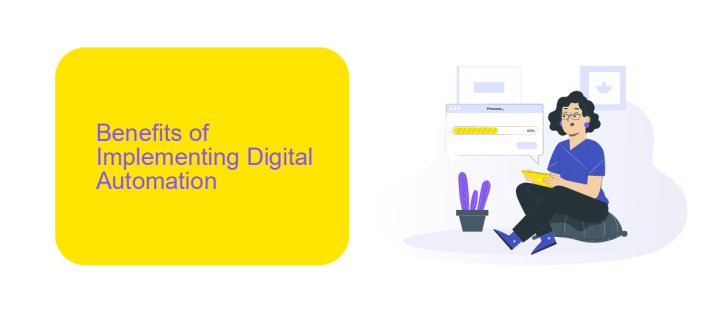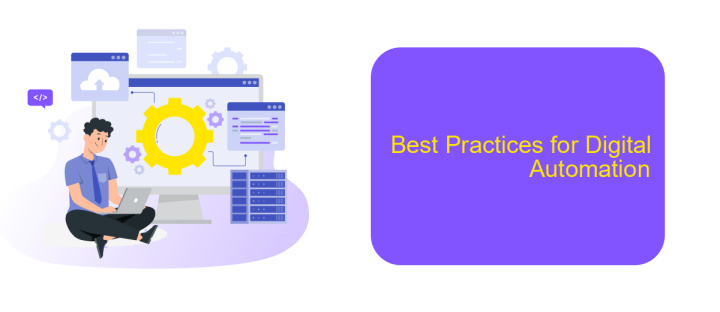Digital Automation Workflow
In today's fast-paced business environment, digital automation workflows have become essential for enhancing efficiency and productivity. By automating repetitive tasks and streamlining complex processes, companies can focus on innovation and growth. This article explores the key benefits and implementation strategies of digital automation workflows, providing insights into how they can transform your business operations and drive success.
Introduction to Digital Automation Workflow
Digital automation workflow is revolutionizing the way businesses operate by streamlining processes and reducing manual tasks. This approach leverages technology to create efficient, automated workflows that can significantly enhance productivity and accuracy. By automating repetitive tasks, organizations can focus on more strategic activities that drive growth and innovation.
- Improved efficiency through reduced manual intervention
- Enhanced accuracy by minimizing human error
- Cost savings from streamlined operations
- Scalability to handle growing business needs
- Better compliance and audit trails
One of the key components of a successful digital automation workflow is the integration of various software and systems. Tools like ApiX-Drive facilitate seamless integration, allowing different applications to communicate and work together effortlessly. This not only simplifies the setup process but also ensures that data flows smoothly across platforms, enabling real-time updates and better decision-making. Embracing digital automation workflow is essential for businesses looking to stay competitive in today’s fast-paced environment.
Benefits of Implementing Digital Automation

Implementing digital automation in workflows streamlines processes, reduces human error, and significantly enhances productivity. By automating repetitive tasks, employees can focus on more strategic activities, thus driving innovation and improving overall efficiency. This not only accelerates project timelines but also ensures higher accuracy and consistency in operations, leading to better quality outcomes.
Moreover, digital automation facilitates seamless integration between various systems and applications. Services like ApiX-Drive enable businesses to effortlessly connect different platforms, ensuring smooth data flow and real-time updates. This interoperability reduces manual data entry and the risk of discrepancies, thereby saving time and resources. As a result, companies can respond more quickly to market changes and customer needs, gaining a competitive edge in their respective industries.
Key Components of a Digital Automation Workflow

Digital automation workflows are essential for streamlining business processes and enhancing efficiency. They comprise several key components that work in unison to automate tasks and processes seamlessly.
- Triggers: These are events that initiate the workflow, such as receiving an email or a form submission.
- Actions: Defined responses to triggers, like sending notifications or updating records in a database.
- Conditions: These are rules that determine the path of the workflow based on specific criteria.
- Integrations: Connecting various applications and services to enable data flow and automation. Tools like ApiX-Drive facilitate effortless integration between multiple platforms.
- Monitoring and Analytics: Tracking the performance of workflows to ensure they are running smoothly and identifying areas for improvement.
By leveraging these components, businesses can create robust digital automation workflows that save time, reduce errors, and improve overall productivity. Utilizing integration services like ApiX-Drive allows for seamless connectivity between disparate systems, further enhancing the efficiency of automated processes.
Best Practices for Digital Automation

Implementing digital automation workflows can significantly enhance operational efficiency and accuracy. To achieve the best results, it is crucial to follow a set of best practices that ensure seamless integration and optimal performance.
Firstly, start by identifying repetitive tasks that can be automated to save time and reduce human error. Prioritize these tasks based on their impact on your overall workflow. Next, ensure that the tools and software you choose are compatible with your existing systems. For instance, using integration services like ApiX-Drive can facilitate smooth data transfer between various applications, ensuring that your automated processes run without interruptions.
- Identify and prioritize tasks for automation
- Ensure compatibility of tools with existing systems
- Utilize integration services like ApiX-Drive
- Regularly monitor and update automated workflows
- Train your team to manage and troubleshoot automation tools
Regular monitoring and updates are essential to maintain the efficiency of your automated workflows. Additionally, training your team to manage and troubleshoot these tools will help in quickly addressing any issues that may arise. By following these best practices, you can maximize the benefits of digital automation in your organization.
Conclusion and Future Trends
In conclusion, digital automation workflows have become an indispensable part of modern business operations, streamlining processes and enhancing productivity. By leveraging automation tools, organizations can significantly reduce manual tasks, minimize errors, and ensure more efficient use of resources. As technology continues to evolve, the integration of advanced AI and machine learning algorithms will further enhance the capabilities of digital automation, providing even more sophisticated and adaptive solutions.
Looking ahead, the future of digital automation workflows will likely see a greater emphasis on seamless integration between various platforms and services. Tools like ApiX-Drive will play a crucial role in this evolution, offering businesses the ability to easily connect and synchronize their applications without extensive coding knowledge. This trend towards increased interoperability will enable organizations to create more cohesive and responsive workflows, ultimately driving innovation and competitive advantage in the digital age.
FAQ
What is Digital Automation Workflow?
How can Digital Automation Workflow benefit my business?
What types of tasks can be automated?
How do I get started with Digital Automation Workflow?
Is it difficult to set up Digital Automation Workflow?
Time is the most valuable resource in today's business realities. By eliminating the routine from work processes, you will get more opportunities to implement the most daring plans and ideas. Choose – you can continue to waste time, money and nerves on inefficient solutions, or you can use ApiX-Drive, automating work processes and achieving results with minimal investment of money, effort and human resources.

